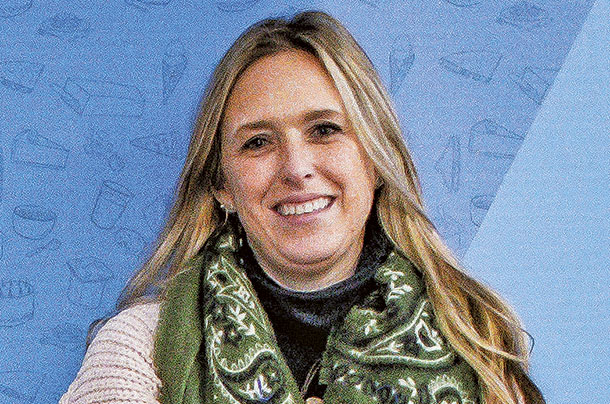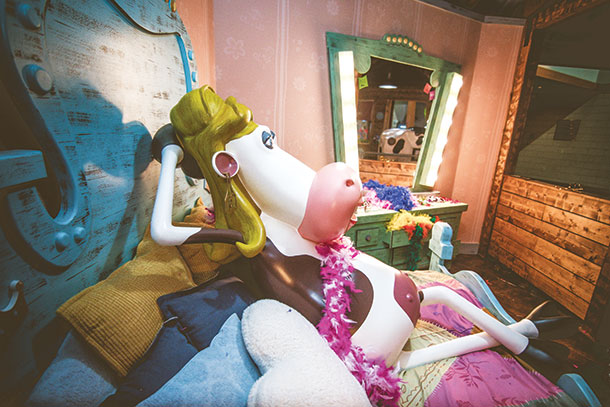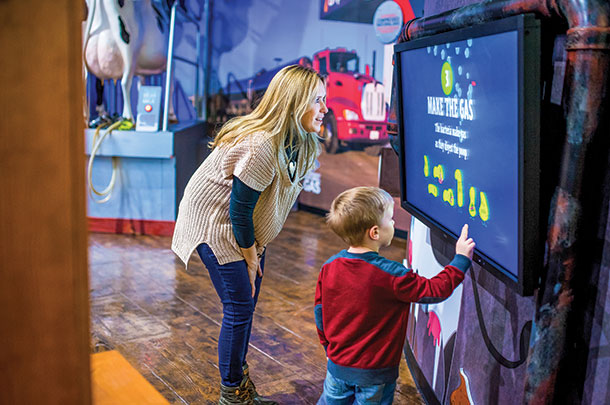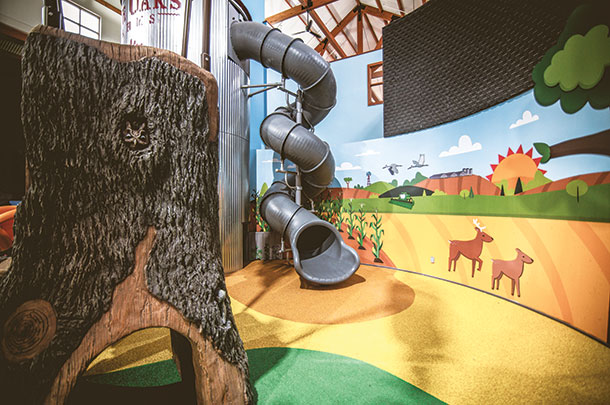Progressive Dairyman Editor Walt Cooley asked Tomich to explain more of what she learned about educating consumers from working on the project. Michaline Tomich
Michaline Tomich
Mixdesign
What is the Fair Oaks project you have been working on, and how did you come to work on it?
Tomich: Fair Oaks Farms is a well-known agritourism destination, and they are not that far from our office in Indiana. We met them locally about six years ago. We were invited then to help with the development of their pig adventure. We developed a great working relationship with them in that process. That is when Mixdesign really got the opportunity to dive into telling the story of agriculture for Fair Oaks Farms.
What was the goal or mission of the redesign of these exhibits?

Tomich: I think the biggest focus the whole time was really just presenting dairy in a fun light. Fair Oaks wanted to really showcase how the cows are treated like queens, i.e., good animal care. They’ve actually developed a character around the cows, called Diva Cow, to highlight in kids’ tone how the cows are treated like divas. Also, functionally speaking, they are accommodating a lot of large school groups, so we wanted a story that had no beginning and end.
The traditional museum experience is you kind of start at one point and you navigate your way around the story to the end. Our goal was to make it something where you could start and stop the story at any point. The dairy story is naturally a closed-loop story. The crops are grown to feed the cow, the cow poops which goes into the digester, the digester recreates energy which fuels the farm, and the trucks going off the farm are powered by the digester to get milk into consumers’ homes, including the home of the farmer, where it all starts over again. It’s a recycling story.
In your experience designing exhibits, how often do they typically get redesigned?

Tomich: In the past, a lot of exhibits were good for 10 to 15 years. But nowadays they are five-year projects. Most of the projects we do are designed in phases because you want to keep reinventing the experience. It’s different than an old-fashioned museum. It’s good for the guests but hard for the budget. We have secret little fun things planned for year two and year three of this roll-out to keep presenting new things for people who want to keep coming back.
What kinds of new technology have been built in to this redesign that you are most excited about?
Tomich: We have a neat interactive experience that takes you into a farmer’s house. There’s multiple screens, and you walk in and different people in the family are on the screens talking to each other. Instead of just looking at one monitor, they give you a multilayered view with a couple of different conversations going, and you’re in the middle of them. We have some cool 3-D animation, and the Fair Oaks team has worked with an animator to reinvent their theater experience too with the really cool 4-D story.
What was the biggest challenge you have found associated with this redesign?
Tomich: The biggest challenge with a lot of experience designs now is twofold – one is that people don’t love to stand and read anymore. They have shorter attention spans. The biggest challenge we had on this project was to tell the full story of dairy in little bursts of information. We try to keep sentences short, allowing people to listen, watch virtual or augmented reality and experience play-based learning. The second challenge is that kids especially are used to technology now, so creating things they haven’t experienced that are new and cool yet budget-conscious for the owner is a challenge. We’re constantly walking the line between play and fun, and budget and information overload.
Tell me what you’ve learned in your line of work about educating consumers on agriculture.

Tomich: Showcasing animal care is really important to people. Secondly, we need to really understand what people know and don’t know. One thing our team has been fascinated with is that all the farmers we have met and have toured their farms are all so nice. Our mission has been to get people to understand that. Getting farmers to be OK with people asking them questions is also our goal. Farmers don’t necessarily view themselves as the person who is in the position to answer consumer questions. But we have learned that people want to hear those answers from the farmer.
How will the new exhibits you’ve helped to create better connect with consumers?
Tomich: Rather than just serving up information about milking or information about farming in a very factual way, everything is interactive and put into context. For example, one exhibit is presented from the perspective of the animals. We worked with Dairy Management Inc. and Fair Oaks to put everything in context. Another way they have improved is that we reached out to dozens of dairy farm families. I think there were probably 20 or more different types of dairy farm families who contributed to the presentation of what it is like to be a dairy farmer. We got a lot of good perspective. It is not just all about Fair Oaks.
What has the dairy checkoff’s involvement been in the project?
Tomich: The checkoff has validated all of our content and conversations. The two things they have done is provide as much content as needed so the story is very accurate, and they have been making sure that when this project is done there are some fun tools other farmers can tap into and use.
What’s your personal favorite new exhibit?
Tomich: There is one we lovingly refer to as the “fart game.” It is fast-paced and emphasizes the purpose of good bacteria. In the game, the good bacteria eat the poop to process it, and ultimately it becomes biofuel. We did not skip the opportunity to involve fart noises and poop talk. We are hoping every grade school boy coming through, and his dad, just cannot resist that game.
What aspect of this project are you most pleased with?
Tomich: With this project and others we’ve worked on, we get to tell the story of ag with a lot of creative license. Our big surprise throughout the whole process is that every single farmer we’ve met is just so nice. That makes it a real joy to tell their story. ![]()
PHOTO 1 & 2: Fair Oaks Farms in Fair Oaks, Indiana, recently redesigned its agritourism and educational experiences with the help of Mixdesign, an Indiana-based experience design firm.
PHOTO 3: Michaline Tomich interacts with a guest playing her favorite game at Fair Oaks Farm Dairy Adventure – a touch-screen game explaining how bacteria are involved in digesting forages and turning manure into methane.
PHOTO 4: One of the highlights of the interactive experience is an indoor two-story slide. Photos provided by Michaline Tomich.




